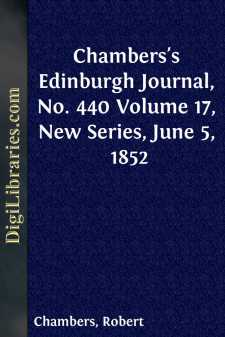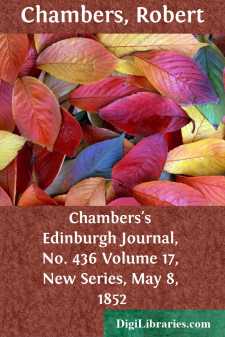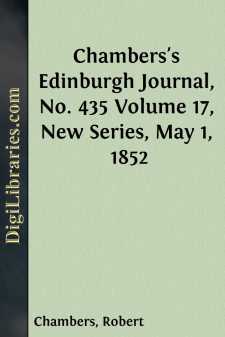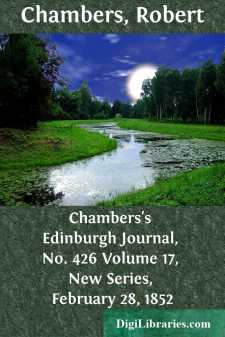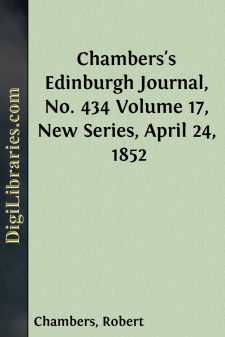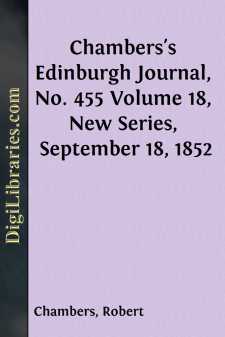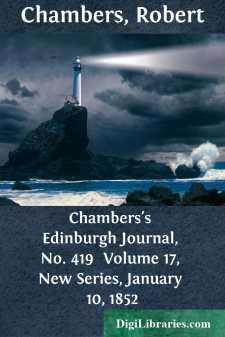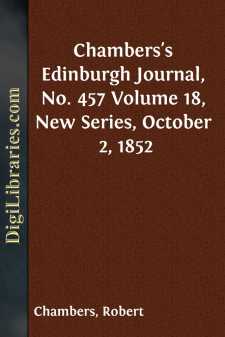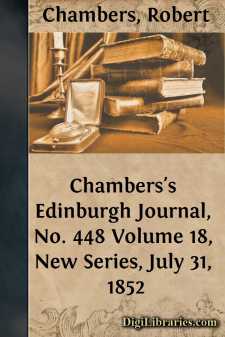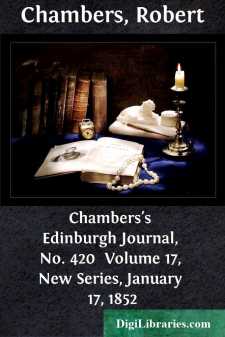Categories
- Antiques & Collectibles 13
- Architecture 36
- Art 48
- Bibles 22
- Biography & Autobiography 813
- Body, Mind & Spirit 142
- Business & Economics 28
- Children's Books 17
- Children's Fiction 14
- Computers 4
- Cooking 94
- Crafts & Hobbies 4
- Drama 346
- Education 46
- Family & Relationships 57
- Fiction 11829
- Games 19
- Gardening 17
- Health & Fitness 34
- History 1377
- House & Home 1
- Humor 147
- Juvenile Fiction 1873
- Juvenile Nonfiction 202
- Language Arts & Disciplines 88
- Law 16
- Literary Collections 686
- Literary Criticism 179
- Mathematics 13
- Medical 41
- Music 40
- Nature 179
- Non-Classifiable 1768
- Performing Arts 7
- Periodicals 1453
- Philosophy 64
- Photography 2
- Poetry 896
- Political Science 203
- Psychology 42
- Reference 154
- Religion 513
- Science 126
- Self-Help 84
- Social Science 81
- Sports & Recreation 34
- Study Aids 3
- Technology & Engineering 59
- Transportation 23
- Travel 463
- True Crime 29
Chambers's Edinburgh Journal, No. 440 Volume 17, New Series, June 5, 1852
by: Robert Chambers
Description:
Excerpt
VISIT TO THE SCENE OF THE HOLMFIRTH FLOOD.
The great flood which took place in the valley of Holmfirth in February last, was in itself a deeply-interesting and awe-exciting incident. I was curious to visit the scene, while the results of the catastrophe were still fresh, both on account of the sympathy I felt with the sufferers, and because of some physical problems which I thought might be illustrated by the effects, so far as these were still traceable. I therefore took an opportunity on the 22d of April, to proceed from Manchester to Holmfirth, accompanied by two friends, one of whom, though he had not visited the place since the calamity happened, was well acquainted with the scene and with the country generally, so as to be able to guide us in our walk. A railway excursion to Huddersfield, and a second trip on a different line from that town to the village of Holmfirth, introduced us to a region of softly-rounded hills and winding valleys, precisely resembling those of the Southern Highlands of Scotland, as might indeed be expected from the identity of the formation (Silurian), but which had this peculiar feature in addition, that every here and there was a little cloth-making village, taking advantage of the abundant water-power derived from the mountain-slopes. The swelling heights were brown and bare, like those of Tweeddale; and there the blackcock may still, I believe, be found. The slopes are purely pastoral, with small farm-steadings scattered over them. But down in the bottom of the dale, we see the heavy stone-and-lime mill starting up from the bare landscape, with a sprawling village of mean cottages surrounding it, giving token of an industrial life totally opposite to that which is found beside the silver streams of the Tweed and its tributaries. When we passed near any of these spots, we were sure to catch the unlovely details, so frequently, though so unnecessarily attendant on factory-life—the paltry house, the unpaved, unscavengered street, the fry of dirty children. It was a beautiful tract of natural scenery in the process of being degraded by contact with man and his works.
Arriving at Holmfirth at one o'clock, we found it to be a somewhat better kind of village, chiefly composed of one or two irregular streets running along the bottom of a narrow valley. Hitherto, in passing up the lower part of the vale, we had looked in vain for any traces of the inundation; but now we suddenly found ourselves in the midst of ruin and devastation. Holmfirth is only two miles and a half from the reservoir, and being at a contracted part of the valley, the water came upon it in great depth and with great force. We found a bridge deprived of its parapets, the boundary-walls of factories broken down, and court-yards filled with débris and mud. Several large houses had end or side walls taken away, or were shattered past remedy. In a narrow street running parallel with the river, and in some places open to it, many of the houses bore chalk-marks a little way up the second storey, indicating the height to which the flood had reached....


